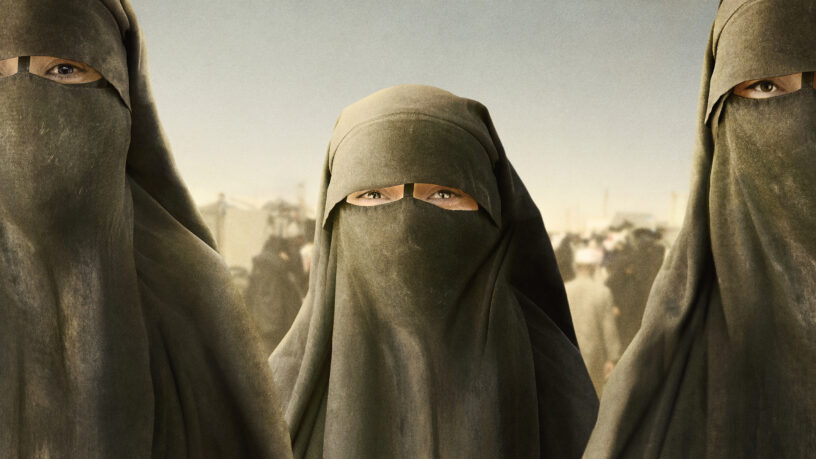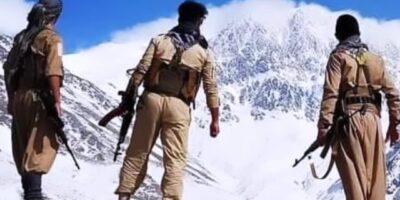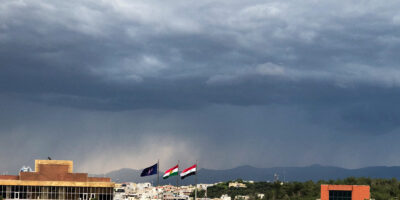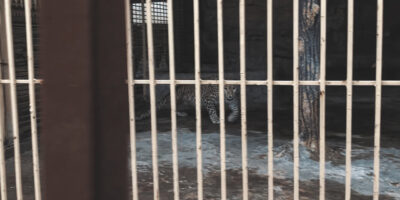This is the second part of an investigation into how the New York Times turned a feud between two Swedish Kurds into an international drama. At its core, this is the story about the ethics of journalism.
Part one can be read here: When ‘God’ speaks, everyone follows
Kurdish filmmaker Hogir Hirori celebrated the Sundance award for his documentary Sabaya about the Yazidi community’s efforts to rescue their women and children from the Islamic State (ISIS) in northeast Syria. The refugee from a small mountain village dared to dream of winning an Oscar, but his joy was short-lived. On February 14, 2021, two weeks after he won the award, he received a private Facebook message from Dr Nemam Ghafouri. This was their first direct contact since they broke off relations a year and a half earlier in Mahmoud Rasho’s house in Rojava when Hirori made the decision to not include the doctor in his documentary.
Dr Ghafouri said that she and “her girls” did not want to be in the film. She did not say who “her girls” were and added this was not the first time that her work and knowledge of the region had been taken advantage of. She then accused Hirori of portraying Rasho as a hero while knowing what he did to the girls and said the truth will come out one day.
Hirori replied on the same day. “Hi Nemam, hope all is well with you. These are serious accusations you bring against Mahmoud. Nothing I want to go into or comment on because I know nothing about it,” he said, adding that Dr Ghafouri appeared in only one clip in the film where she was in the background. “The only thing in the film ‘Sabaya’ that has to do with you is a single short video clip at Mahmoud’s house where I filmed and you, among several others, enter the picture. It’s not a close-up and you don’t say anything in the clip where the focus is on someone else,” he wrote.
The allegations against Rasho were a mystery. Elias Sido, a minister in the Rojava administration who also worked at Yazidi House and was very close to Dr Ghafouri, had not heard anything and others in the Kurdistan Region who worked with the doctor in caring for the survivors were also unaware. No journalists including Jane Arraf had mentioned anything in their dispatches from Rojava. When Dr Ghafouri posted a warm video of Rasho’s mother on her Facebook page in July 2019, Jane Arraf commented, “This is an amazing family.” While these allegations are serious, I interviewed 23 survivors and members of their families who stayed with Rasho’s family for this story and none had heard of these allegations.
Hirori did not know what to think and given the vagueness of the message, he decided not to raise the issue with the members of Yazidi House.
The audio recording
Almost ten days after Dr Ghafouri’s message, Hirori sent consent forms in both Arabic and English to survivors and rescuers who appeared in the film.
One of the women who returned to al-Hol with the rescuers as part of the infiltrators team is illiterate and had her nephew read the form to her before she signed it. Another had told the New York Times’ fixer over the phone that the consent form was sent to her only in English. She had attended school for just a few years and so also asked her nephew for assistance. The nephew, in the company of the woman and two other survivors featured in the film, confirmed to me that the form was indeed in Arabic and English.
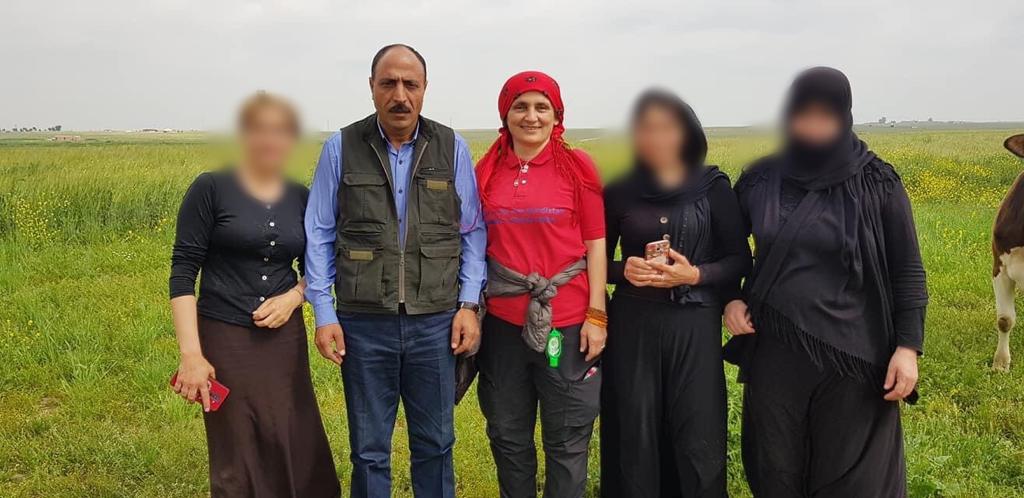
The New York Times maintained in an email to filmmakers who protested the article shortly after it was published that consent forms in English and Arabic “would not likely be meaningful to interviewees who communicate in Kurdish.” However this is not wholly accurate. The Sinjar area is land disputed between Erbil and Baghdad and while the Kurdish dialect of Kurmanji is the language commonly spoken among Yazidis there, they are more comfortable reading and writing in Arabic, which was the language of instruction in school. Yazidis living closer to Duhok speak, read, and write in Kurmanji as this area has been part of the Kurdistan Region for decades.
Two others from the infiltrator group did not sign the forms. One of them, Hajar*, who has a child from an ISIS rapist, had appeared unveiled on camera with her child in a March 2019 documentary and spoke about her time in captivity, rape and ill treatment. She said that she was illiterate and did not know exactly how old she was. The other woman, Evar*, was with Dr Ghafouri in August 2019 in Sinjar, one month after she was filmed in Rasho’s house in Rojava and asked Hirori to go and film her there, appearing to indicate her consent to being filmed.
At the time that Hajar and Evar refused to sign the consent forms, around March 3, they were both with Dr Ghafouri and eight other survivors in Zakho, waiting to be reunited with their children from the orphanage in Rojava.
Dr Ghafouri was working on a secret operation with the help of US diplomat Peter Galbraith to reunite survivors with their children. Galbraith would later launch stinging attacks on Hirori in The Times and the Swedish tabloid. Dr Ghafouri had invited the New York Times, the Guardian, and Swedish Public Radio to cover the operation. An American filmmaking team was also present making a documentary about the New York Times coverage of Dr Ghafouri’s efforts in reuniting the mothers with their children.
Dr Ghafouri caught covid-19 during this trip and died in a hospital in Sweden on April 1. Arraf, who also contracted covid-19 at the same time but recovered, mourned Dr Ghafouri’s death and described her as “true original… who moved mountains.”
When Hirori spoke with Hajar about signing the consent forms, she made an allegation against Rasho, saying that he had held her from behind while in a kitchen in al-Hol camp and had said he would be happy to ask for her hand in marriage and raise her child. Hajar said she had not told this to anyone else – not the other infiltrators, Asayesh, or Yazidi House staff.
Hirori maintains that he could hear Dr Ghafouri speaking in the background during this phone call. An audio recording of their conversation was later passed on to a Swedish tabloid and Swedish Public Radio as part of a well-orchestrated campaign to discredit Hirori.
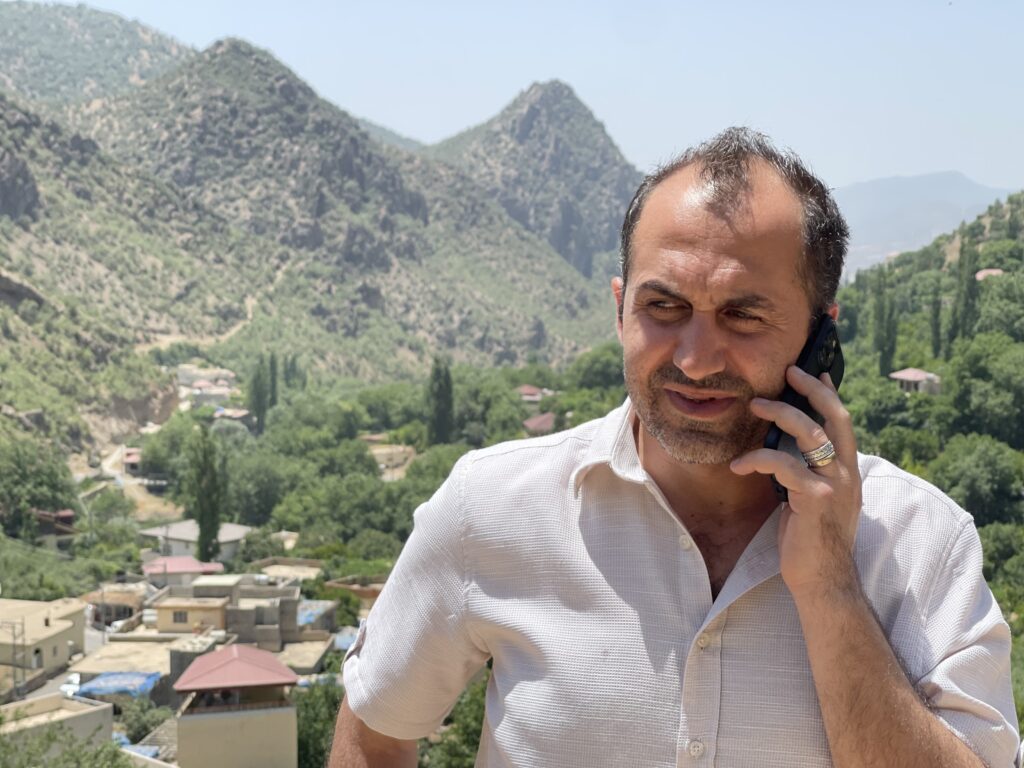
After hearing the detailed allegations directly from Hajar, Hirori immediately raised them with the woman who led the infiltrator group and Shex Zyad at Yazidi House. Both denied any knowledge of the alleged events. Yazidi House staff also challenged Rasho about it and he denied the incident. “Bring the accuser or let me talk to her. If you are convinced, then I am happy to shoot myself in the head,” Rasho told Hirori when he called him on the matter.
And then ‘God’ rang
Shadya* was sitting in her tent on September 19, 2021 when at least two people forwarded her a photo on WhatsApp. In the image of two women, a circle had been drawn around one of them, as if she was a target. There was a man looking for the people in the image, the messengers said. Shadya peered at the photo and realised it was a grab from Hirori’s documentary Sabaya in which Shadya sat next to the girl in green, Sama*, both of them looking into the distance.
Though the Yazidi survivors are now safe, they still live in fear, constantly looking over their shoulders. Some have received intimidating calls from ISIS militants who threatened them with death and abduction.
“I was unsettled,” Shadya said of receiving the photo when I visited her in June. The call for prayer announced from a nearby Muslim village played in the background. “I was not scared, but just shocked and angry.”
Others received the same photo with the circle and were asked to identify the woman in green.
Shadya was fretting about why they had circled the woman when she received the same photo from an unknown number. Then her phone rang. The man on the line was Sangar Khaleel. He confirmed that he was the source of the photo and was trying to track down both survivors to interview them for the New York Times about Sabaya.
Shadya had no idea what the New York Times was and remembered Khaleel only as a translator.
Michael Slackman of The Times who edited the story did not answer how many people their fixer sent the photo of these vulnerable women to and if this behaviour was considered ethical by the paper.
Agitated, Shadya ended the call and fired off a series of audio messages on WhatsApp to Khaleel, whose questions were leading and implied that she had not given consent to be in the film. She felt she was being pressured to give up her agency. “I’m sorry. I don’t even want to be interviewed as there is no point in having an interview,” Shadya snapped in her voice message.
She was bothered that Khaleel’s questions were similar to those from another person, who had tried to coerce her into withdrawing her consent from the film. “Since the production of this film, Nemam has been sending [people] to me, saying things like I have not given consent… They bothered me a lot. I’m not a child. I’m not a one- or two-year-old girl who is unable to make decisions and determine what is good or bad for Yazidis,” Shadya said, referring to Dr Nemam Ghafouri.
A close associate of Dr Ghafouri, reached by this author via telephone, confirmed that he had approached Shadya and another survivor, but a day later he asked not to be quoted for this report.
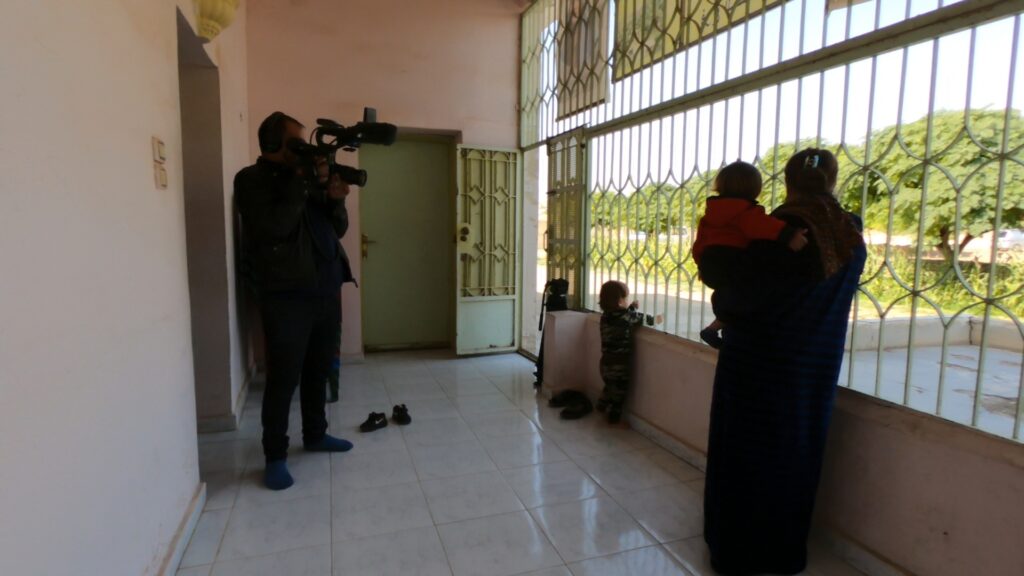
Shadya was categorical that she had given consent to Hirori, had seen the film, and was not going to change her mind. “I do not want to be controlled. Whatever I have said or has been published in the film has been with my consent and it is no one’s business.”
The New York Times did not answer repeated requests to know if Khaleel received specialised training in order to interview Yazidi survivors, such as “trauma-sensitive interviewing techniques, and appropriate uses of language.” All of the sources cited in The Times article were contacted by phone only.
The WhatsApp exchange between Shadya and Khaleel was brought to the attention of Jane Arraf by one of the people who worked on the film in the US. “This is a conversation between your fixer and… [Shadya] … who called Hogir and his wife close to tears the other day after the exchange… These are vulnerable women you are going after. You know that better than me! And to what end?” she pleaded with Arraf a few days before the article was published.
Arraf responded on September 24: “Sangar was unfailingly respectful and made clear he understood her point of view. She told him she did not want to be in this story and we did not put her in.” She also denied knowledge about Shadya’s statement that Dr Ghafouri had placed her under pressure to withdraw from the film.
Shadya was not the only one who was unhappy with how they were approached by the New York Times.
On the afternoon of September 17, Barakat*, one of the men who established the infiltrator group, was in his tent in Kabaratoo camp outside Duhok city when a man in a white 4X4 Toyota Cruiser turned up. The man was Sangar Khaleel and he introduced himself as working for an NGO. Khaleel said that he and a colleague were in Syria when a seven-year-old girl and Sama were freed and they wanted to help them financially, Barakat recalled when we spoke in a cafe in Duhok city in late July.
Khaleel dialled a number and a Canadian woman was on the line. Barakat does not remember her name. She spoke for five minutes and was primarily interested in whether Mahmoud Rasho had violated the girls and women. Barakat was confused but rejected the idea and challenged the woman to present any evidence. This exchange was not included in the New York Times article.
Barakat requested the phone numbers for Sama and family of the seven-year-old through the office set up to rescue Yazidis by Kurdistan Region President Nechirvan Barzani. This office contacted the uncle of the girl, Farhad*, who said he would welcome the financial assistance and gave permission for his phone number to be shared.
When I visited the uncle in a village where he rented a house, he said he had gone through a range of emotions in his contact with the New York Times. He said he was told by the fixer and reporter that his niece’s life was in danger because of the film. This infuriated him, but when he later watched an excerpt from the film that featured his niece, he found there was nothing wrong with it.
“They lied to me from the beginning. I would tell them to their face that they lied if I ever see them,” Farhad told me. When he called Sangar Khaleel to protest, the fixer did not pick up.
After meeting with Khaleel, the uncle called the man from the rescuing office back and told him the NGO turned out to be journalists. Sama’s father-in-law was also in touch, wondering what had happened to the NGO. The rescuing office was irate and efforts to call Khaleel were initially unsuccessful. The fixer later responded saying he was unwell, but confirming he and a Canadian woman had spoken with Sama and her husband. In the WhatsApp audio message, Khaleel does not challenge Barakat when he refers to them as from an NGO.
Neither family received any of the promised funds.
Arraf writes in her article that Sama told The Times: “I saw him filming, but did not know what it was for.” Sama however told me that this is not accurate and that she had told The Times that Hirori had repeatedly asked if it was okay to film her and others. “I did not sign anything but I told him he could film. I had just come back from the dead and did not have a problem,” she said.
According to Sama, the reporter and the fixer were fixated on the notion that Hirori filmed her secretly, something she denied. Arraf also questioned Sama multiple times about Rasho and asked if he had forced her to give up the child. The answer again was negative.
I contacted the majority of women in the film and they said they had no issues with the documentary and their involvement was consensual. They also rejected any notion of Rasho’s misbehaving towards the survivors and were curious to know who was behind the allegations.
The aftermath
Three years after the filming, nine out of 11 survivors thought of Hirori affectionately, like a brother, and resolutely rejected any claims that he would take advantage of them. The faces of the other two survivors in the film were blurred several months before the New York Times article came out.
“I see Hogir as a brother and if the clock turned back I would still give him permission,” said one survivor in a camp outside of Duhok. “I want the world to know what happened to us. He has made no wrongs towards me.”
The women also recalled Mahmoud Rasho fondly.
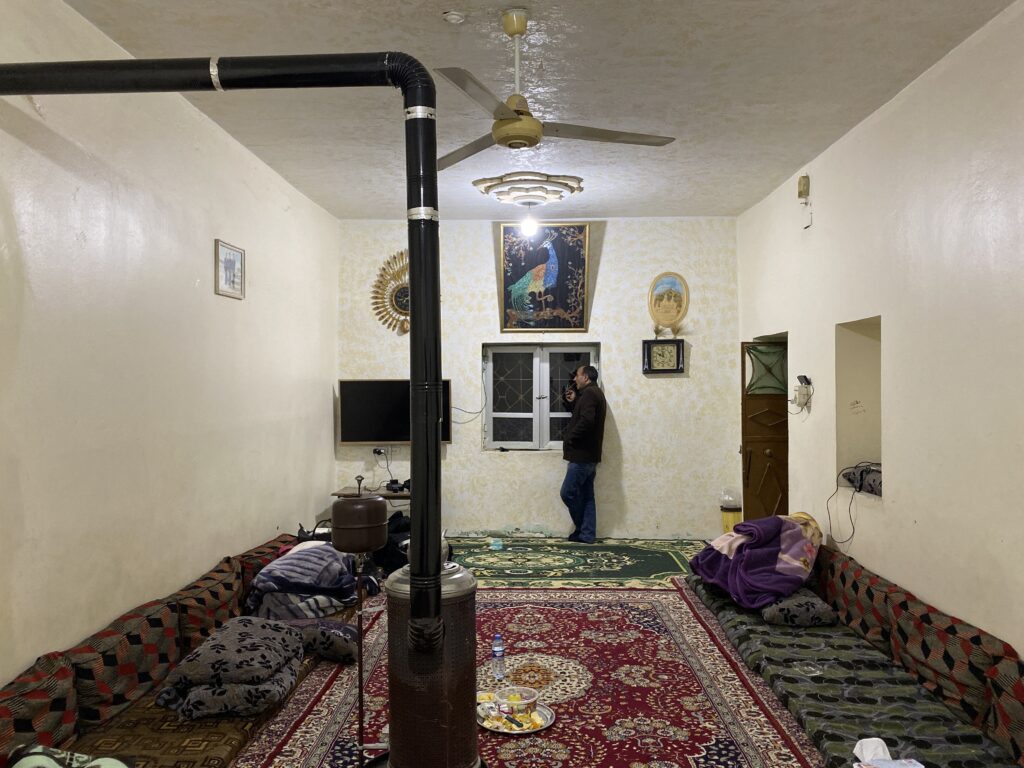
Shadya, who has applied for resettlement abroad, said she had planned to visit Rasho before leaving to say good-bye to him. “I don’t believe he’s dead. He was very good to us. Me and two other survivors changed our profile photos on Facebook to his photo when he died,” she said. She cried for five minutes in her tent as she recalled the day she heard of his death. “I will go to visit his grave before I leave this place for another country,” she said.
Based on my travels to Rojava and multiple camps and towns in Duhok province, meeting with the survivors face-to-face, it is unclear how the New York Times concluded that many women had refused their consent to appear in Sabaya.
The Times stands by their story. “Broadly I can tell you we are very confident in our reporting,” editor Michale Slackman said by email on August 22 in response to 14 detailed questions.
Three days later Nicole Taylor, director of external communications, emailed: “We stand by our story, which is based on interviews with five women and the guardian of a minor who were in the film, as well as members of the human rights community. Our sources are quoted accurately and at length. We firmly stand by our reporters, who maintained complete transparency, respect and empathy to protect the safety of our sources in the news gathering process for this investigation.”
Ghafouri’s sister Nazdar published several op-eds in Swedish media challenging Hirori and echoing issues raised by the New York Times and the Swedish tabloid. Malena Rembe, who used to hold a senior position in Swedish government counter-terrorism agencies and worked as a security consultant, campaigned tirelessly against Sabaya with Dr Nazdar and approached dozens of journalists and filmmakers to take a stand against the film. Rembe spoke to Fredrik Gertten, a respected documentary filmmaker in Sweden on August 13 and tried to convince him to take a stand against Sabaya but he politely refused. When Rembe tried to portray Hirori and his producer as anti-women, Gertten pushed back and said he knew both of them and the charge was not warranted. Then Rembe told the filmmaker that the New York Times would reveal everything. This exchange was 43 days before The Times ran its first story. Rembe even travelled to an IDP camp near Duhok in February in order to entice a Yazidi girl who was the main protagonist of Hirori’s first film to speak against him, the girl and her family told this author.
Hirori family put through hell
In the days and weeks after the New York Times article, Hirori gradually stopped eating and sleeping and could hardly recognise himself. “I have seen a lot in my life, like war, dead bodies, fighting, but I never experienced the kind of feeling I experienced after the article,” he said.
“Life had completely become dark. Everything was dark, my body was at home but my mind was somewhere else. I was in a terrible psychological state. People close to me asked me to see a psychologist but I didn’t have the energy to call one.”
He became singularly focused on the campaign against him and his film. He withdrew from social gatherings and was suspicious of people around him.
The news was everywhere and even his two children were not spared. One morning he overheard his seven-year-old son speaking to his mother in the kitchen. “I don’t want to go to school because my surname is the same as my father’s,” the boy said. “I’m worried that they might hurt me the way they have hurt my dad.”
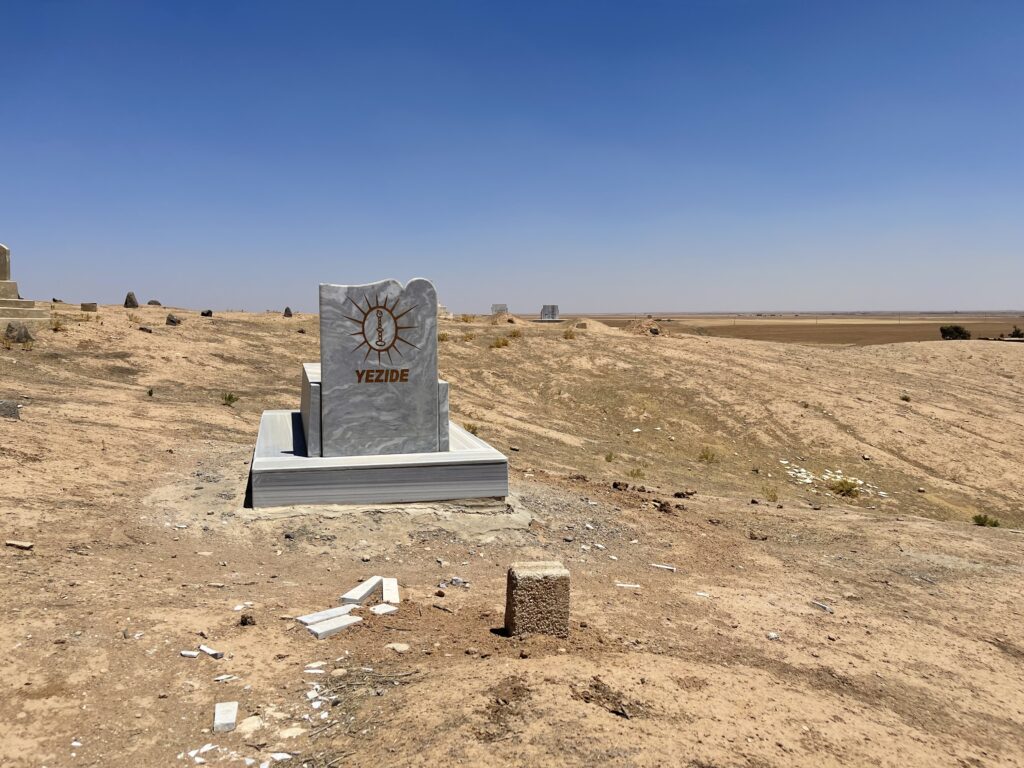
Hirori does not understand why many people in Sweden, Kurdistan, and the US organised with such intensity against him and his film. He noted that many of the survivors he filmed have appeared in other films and on TV speaking about their experiences under ISIS and revealing very personal information.
“The campaign was mind blowing, the scale was unbelievable,” Hirori said.
He does not understand why so many people in the film industry would sign a petition to Sundance Institute to withdraw the award without speaking to him or even watching the film. I contacted close to 30 people who signed the petition. Most did not reply. Five referred me to the organiser of the petition. Only one confirmed on the condition of anonymity that almost no one who signed the petition watched the film.
“I never had seen such a fight. To this date there is so much that I don’t know. They told so many lies that I realised that they are prepared to do anything to stop the film,” Hirori said.
The original idea that Hirori and his wife had was to make a historical document so the tragedy of the Yazidi genocide would not happen to any other community. He also wanted to bring into focus the survivors as many are still struggling in tents and camps across Duhok province. Two months before the New York Times piece was published, Hirori and his producer were preparing to register a fund in the US, “Save the Yazidi girls, until the last one,” to collect money to free the captives.
His wife Berzinci has faith in her husband despite the campaigns and believes that he did not make any mistakes in dealing with the survivors. “It’s incredibly tragic how a good, important idea focusing on these women can be totally turned on its head like this,” Berzinci said in an email. “The biggest victims in this ‘campaign’ are the women in the film, who have been put under pressure for so long, and are now being called into question for using their voices.”
* Names have been changed to protect their identity and their families.
Nesar Record reached out to Peter Galbraith, Dr Nazdar Ghafouri, Melena Rembe, and the Swedish tabloid Kvartal, but none replied to our queries.

